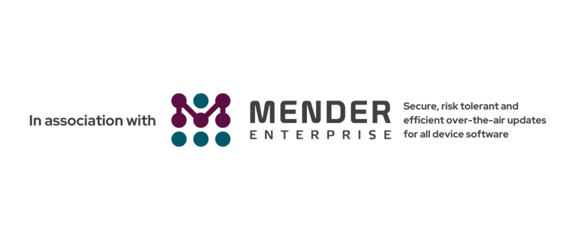The Device Chronicle spoke to Hugo Serrat, CTO at Paris-based Bilberry.io. Bilberry is using the Nvidia Jetson OTA, software updates and deep learning based on Computer Vision to enable several game changing use cases in Agriculture in both Europe and Australia with ambitions to grow in the United States and Canada.
Spot spraying that results in up to 92% less water and pesticides being used is the sustainability that comes from applying IoT and AI-based technologies in agriculture. IoT and AI technologies have tremendous potential to improve processes in agriculture. In doing so, it can bring about a more sustainable production, and a major reduction in the use of pesticides and water.
Improve the workflows with Nvidia Jetson
Firstly, Hugo speaks about the key trick to making new digital technologies work for the agricultural industry. He says you must try to help the farmer, and not hinder them. This means not trying to change their entirety of their existing workflows but actually trying to enhance them. If you do this well, then you can provide them with a new capability to glean insights quickly that will help them manage their crops in a better way. You will need to find the early adopters, innovators, pioneers that show the way forward. “Many (farmers) are looking for a solution and word of mouth help to grow the adoption of the technology.”
Changes afoot
The IoT industry is trying to work with the major chemicals providers to make improved and more sustainable solutions. Hugo adds “There is no perfect solution yet but there are many novel approaches to supplanting the use of pesticides.”
Eye catching use cases
There are many different applications of IoT in agriculture and Hugo points to some very interesting ones. Laser projection and boiling water projection is being used to remove weeds. Electrical weeding using wires is also being adopted. Intelligent insect traps use data from AI-enable cameras to release pheromones at optimal times to trap more insects. In Dairy farming, smart cameras are used to monitor the health of the flock. There is market interest in automation and robotics but there are challenges with broad acre crops where the capacity to service is limited. “As a result the trend is to build a robot swarm or automate the machinery in some way.” Weather patterns can also be monitored and predicted, and the insights sent to the farmers in real time to help them decide on when are the best times to start different types of climate-sensitive work. Models have also been developed to help predict disease in the crops. Computer vision has also enabled mechanical weeding where weeds can be detected and removed without ripping the crop.
Test the value first
Hugo observes that there is “needs for lots of testing and as a service provider, he says you must be certain that the value you are bringing will be enough even before you run a proof of concept in the field. “It’s a rough world, you must be able to provide a robust system that will sell quickly and solve real problems in a seamless way.”
Scale, cost & complexity
Scale is another question and for Hugo: This depends on hardware and the software required for the project. He says the costs of the technology cost will go down over time making it accessible to small and medium-sized farm holdings. But cost and complexity is still added to the mechanical machinery and in the conservative industry patience is required for farmers to see Return on Investment. Many smaller farmers may ponder “when is a good time to invest in this technology?
Uncovering the ecosystem where Nvidia Jetson plays a role
Hugo describes the interesting digital ecosystem that is developing. “There are the large players such who run large IoT networks with connected machinery. Then there are the equipment manufacturers who provide more and more connected devices and the startups who are trying to push the boundaries in innovation.”
Connectivity challenges
Connectivity in exterior environments can also be challenging. As a service provider that manages the system remotely, Hugo says, you just have to get quick access to the data streams and analysis. Therefore the data processing will mostly be done at the edge. You must work with a device that has limited power resources and that must still process data in real time. The AI model must also be robust enough to be accurate to help make the right decisions based on insights being relayed remotely to the farmer. If things go wrong, the service provider must be able to react quickly and take control of the situation.
Worthwhile work with the Nvidia Jetson
For Hugo, the work he and his team at Bilberry is doing has huge potential. He says “this work gives you the opportunity to know what is in the field in real time, saves chemicals, water and in the longer term should increase crop yield.” His product which is fitted to agricultural equipment from manufacturers including Agrifac and Downs is a set of cameras that are fitted to the booms of large sprayers at 3 metres apart. The cameras with computer modules use computer vision to detect and spot spray weeds. The cameras work with the Nvidia Jetson embedded computer to open and close the sprayer nozzles as and when weeds are detected. Hugo explains that “Deep learning is run at the edge in embedded devices, behind each camera a computer module that processes every picture.” OTA software updates with artefacts provided by Mender are used to keep the embedded devices working optimally and securely. The biggest sprayer has a boom 49 metres in width. There is an Nvidia Jetson module behind each camera so 16 devices on the sprayer need to be updated. The sprayer is the size of an olympic swimming pool moving at 25km per hour and hitting weeds as small as 3cm.
Bilberry uses IoT and AI for another use case with manufacturer Downs. It is an optical sorter for potatoes. The Downs CropVision is a new generation optical sorter for unwashed potatoes. It allows a qualitative sorting of the potatoes at high speed before sorting them (to 100t/h). Hugo explains that industrial cameras coupled with an Artificial Intelligence algorithm make it possible to analyse the whole 360° surface of the potatoes in order to classify them with precision according to their quality into Clods, Stones, Waste, Good potatoes, Green potatoes, Cut potatoes, Spoiled potatoes, Mishappened potatoes and Cracked potatoes.
We wish Hugo and his colleagues well as they continue to apply digital technologies to produce more sustainable outcomes in agriculture.
Find more use cases and insights into the use of IoT and OTA software updates from the energy industry.

